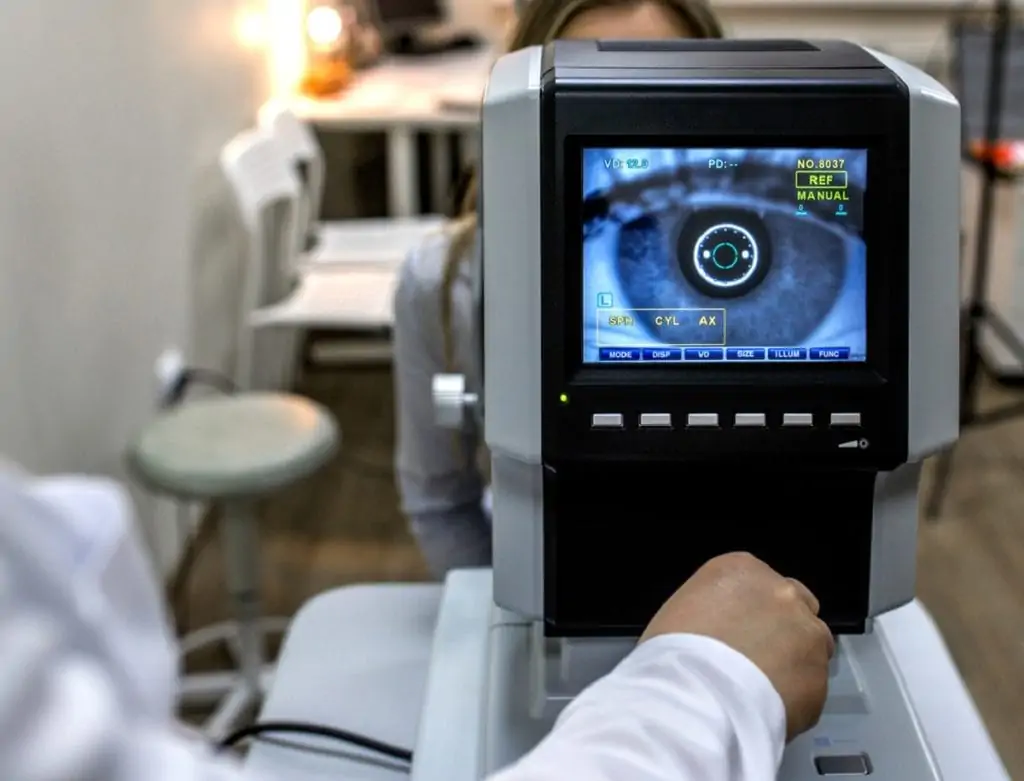LASIK Complications and LASIK Eye Surgery Risks

LASIK Complications and LASIK Side Effects: Key Takeaways
- Serious LASIK complications are extremely rare, occurring in less than 1 percent of procedures.
- Most side effects from LASIK are part of the normal healing process and go away over time.
- Importantly, LASIK side effects are not complications.
- The most common LASIK side effects patients experience include dry eye, glare, halos, or night vision symptoms during the healing process.
- Treatments are available to address these symptoms.
“LASIK complication rate.” Sounds scary, doesn’t it?
If you’re considering LASIK – either thinking about it for the first time, or actively researching the laser vision correction procedure – you’ve probably come across online articles and social media posts warning you about LASIK complications – talking about the LASIK complication rate, the LASIK eye surgery failure rate, providing statistics, and racking up lists of LASIK side effects.
It’s enough to make you rethink LASIK and settle for a lifetime of eyeglasses or contact lenses – with all the inconvenience and limits on your active lifestyle.
Should you forget about LASIK?
The answer is a resounding “no!” Instead, get the facts about the LASIK complication rate, learn the truth about LASIK side effects, and steer clear of wrong or misleading information. When researching if LASIK is right for you common questions can include: How long does LASIK last? Does insurance cover LASIK? What should I expect with LASIK recovery? And what are LASIK risks and side effects? Getting the facts about LASIK is important.
What are LASIK eye surgery risks? Get educated
Smart consumers know they need to do research before buying any product or service. That’s especially true when it comes to something as critical as surgery and as precious as your eyesight.
How should you do your research? Especially in the age of the internet, there’s a mountain of information right at your fingertips.
Unfortunately, there’s a mountain of misinformation, too. That’s understandable. Science and medicine are highly technical. Original research reports are written in language that’s difficult to understand. They include complicated statistics that non-scientists can find hard to follow. Terms are used that may sound like each other – like “LASIK complications” and “LASIK side effects” – but are actually very different. People who post on social media can get them wrong – in fact, even professional reporters from the mainstream media can get confused.
Add to that the natural fear that people feel about surgery – especially surgery involving the eyes – and the result is a lot of misinformation. Data gets mixed together – numbers about very rare complications get combined with numbers about very common minor side effects to produce a big total that’s scary but not really informative. People get confused about what percentage of people in a study group reported an experience. They misunderstand what the purpose of the study was in the first place. At the end of the day, there’s a big pile of LASIK stories and posts that are loud, frightening, and just plain wrong.
But it’s possible to find out what’s true and what’s false – what’s accurate and what’s wrong – what’s clear and what’s confused.
To do that, you need to know what questions to ask, and what facts really matter.
Here are some questions to start with.
What are LASIK Complications? What are Side Effects? What’s the Difference?
It’s unfortunately common to read alarming reports about “LASIK complications and side effects.”
The problem with many of those reports is that they’re designed to alarm you, not to inform you. The way they do it is to combine different things into one big category to make problems seem much more serious and widespread than they are.
So, here’s the first important thing to know: complications and side effects are not the same thing.
“Side effects” is a big umbrella term that covers everything that can happen from medical treatment that wasn’t originally intended. Side effects can be serious, but they often aren’t. Side effects can be long-lasting, but many of them go away quickly on their own. Side effects can even be positive. Rogaine started life as a blood pressure treatment. In trials, it was discovered that Rogaine also helped to grow hair. That was a side effect that made a lot of people happy.
“Complications” are exactly what they sound like – unintended results that make a condition more complicated, and that might even require additional treatment. Complications are serious. But they’re also much less common than side effects.
Any article or social media post that uses “complications” and “side effects” interchangeably is wrong. It’s also doing you a great disservice. It’s making you alarmed – maybe because it’s designed to make you alarmed – about effects that might be very minor, and that might go away over time. And it’s making it harder for you to understand which effects are really serious, so you can decide whether to agree to a treatment or not.
LASIK side effects: What are they? How common are they?
The most common LASIK side effects that patients experience are:
- Dry eye
- Glare
- Halos
- Ghosting
- Starbursts
Like any medical procedure, LASIK can have side effects. The most common are those experienced as part of the normal healing process and recovery period. These include visual symptoms, such as glare, halos, ghosting, and starbursts, as well as dry eye.
What makes these side effects and not complications is that they generally go away over time. Sometimes additional treatment may be needed. But that’s extremely rare.
The latest peer-reviewed, published clinical data provides compelling LASIK side effect statistics:
- Up to 30 percent of patients experience dry eye symptoms in the first three months after surgery.
- Less than five percent of the time, glasses, contact lenses, or additional LASIK treatment may be needed to smooth out any remaining nearsightedness, farsightedness, astigmatism, or higher-order aberrations on the cornea that contribute to visual symptoms.
- Some may have dry eye, glare, halos, or night vision symptoms for six to 12 months – usually, this is part of their healing. For those very few patients who experience these side effects, there are therapeutic treatments.
What is the LASIK complication rate?
The LASIK complication rate is less than 1%. LASIK complications include infections as well as dislocation of the corneal flap that’s made during the surgery. Surgical complications from laser vision correction are extremely rare. But they do occur. These qualify as complications because they require additional treatment – it could be harmful to leave them untreated.
But LASIK complication rate statistics are extremely low. Less than one percent of LASIK patients experience these surgical complications. That’s one percent, as opposed to the up to 30 percent of patients that report experiencing short-term side effects. In other words, LASIK complications are very rare events.
Recent news reports of an FDA study said the LASIK complication rate is 45 percent.
The news media were talking about the FDA’s PROWL (Patient-Reported Outcomes With LASIK) study. Reports about that study are a great example of how coverage, including from major media outlets, can get LASIK complication statistics completely wrong.
News reports said that the FDA PROWL study found that 45 percent of LASIK patients experienced visual symptoms including dry eye, glare, halos, and distortions like double vision, ghosting, or starbursts.
But that’s not true. In fact, new symptoms were reported in a small subset of the study population, not in half of the people who participated.
Here are the facts:
- The PROWL study (there were two of them, actually – PROWL-1 and PROWL-2) wasn’t designed to find out anything about the LASIK complication rate. It was designed to test a new questionnaire that would create a standardized way of reporting about the LASIK experience.
- The PROWL study didn’t find that 45 percent of people had visual LASIK symptoms.
- What it found was that:
- A very small group of participants – 75 out of 550 in the first study, and 68 out of 300 in the second study – said they had had no visual symptoms before having LASIK.
- At three months after surgery, 32 out of the 75 said they had at least one new symptom. That’s 43 percent of the small group of 75 – but less than 6 percent of all the people in the first study.
- Six months after surgery, the total had decreased to 26 people – which is 36 percent of the small group of 75, but less than 5 percent of all the people in the first study.
- In the second study, the numbers were similar. At three months after surgery, 31 out of the 68 people said they had at least one new symptom. That’s 46 percent of the small group of 68, but less than 10 percent of all the people in the second study.
So… in other words… the people reporting symptoms were between five and 10 percent of the study participants – not 45 percent. And over time, there were fewer of them.
We understand it’s hard for people – even professional reporters – to follow complicated information from clinical studies that are meant to be read by medical professionals. It becomes even more problematic when people on social media pick up on mistaken information and re-broadcast it, either innocently, or exploit it to sow fear.
For scientists and medical professionals, it’s important to get it right. Accurate information is needed – so people who could benefit from LASIK aren’t needlessly frightened away, and so we can really understand and help the small number of people who do have symptoms after LASIK.
Is there a LASIK eye surgery failure rate? Should I be worried?
In a word, no. If there was a significant problem with LASIK, we’d know it, given the amount of research that’s been conducted over the past two decades. Studies would show lots of clinical evidence pointing to a significant LASIK complication rate. But they don’t. That data simply doesn’t exist.
Many people have an irrational fear of going blind from LASIK. However, nothing could be further from the truth. In fact, there has never been a case where LASIK was the primary cause of blindness.
Based on the latest research, about 96 percent of patients are satisfied with LASIK. That’s an extraordinary success rate for any surgical procedure.
What you should do, if you’re considering LASIK, is get accurate information. That includes information about LASIK risks as well as benefits. You need to find out if you’re a good candidate for LASIK, and whether LASIK is right for you. Not everyone is a candidate for LASIK. There are health issues and eye conditions that increase the likelihood of a less-than-optimal outcome, which is why a consultation with an eye surgeon that includes a thorough review of your health history is important. Fortunately, today there are vision correction options and your surgeon may recommend LASIK or a different procedure, such as SMILE, PRK, or ICL for your specific situation.
How can I be sure I’m getting the true facts about the LASIK complication rate?
Clearly, it’s hard to get accurate information about LASIK from the media, or from social media. If you’re thinking seriously about LASIK – or if you’re just starting to consider it – the single best thing you can do is schedule a consultation with a LASIK eye surgeon. A qualified surgeon will be able to answer your questions and help you understand the risks, the benefits, what to expect from LASIK, and the factors that determine whether or not you’re a good candidate for LASIK surgery. Naturally, you will want to do your own research, and you should. Bring what you find out to get confirmation or clarification about any information to your consultation because talking with a surgeon is the way to get the true facts about LASIK.




